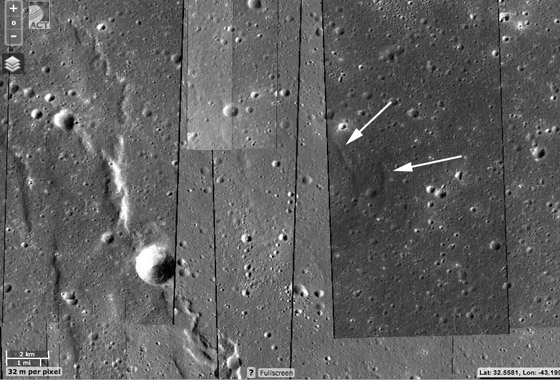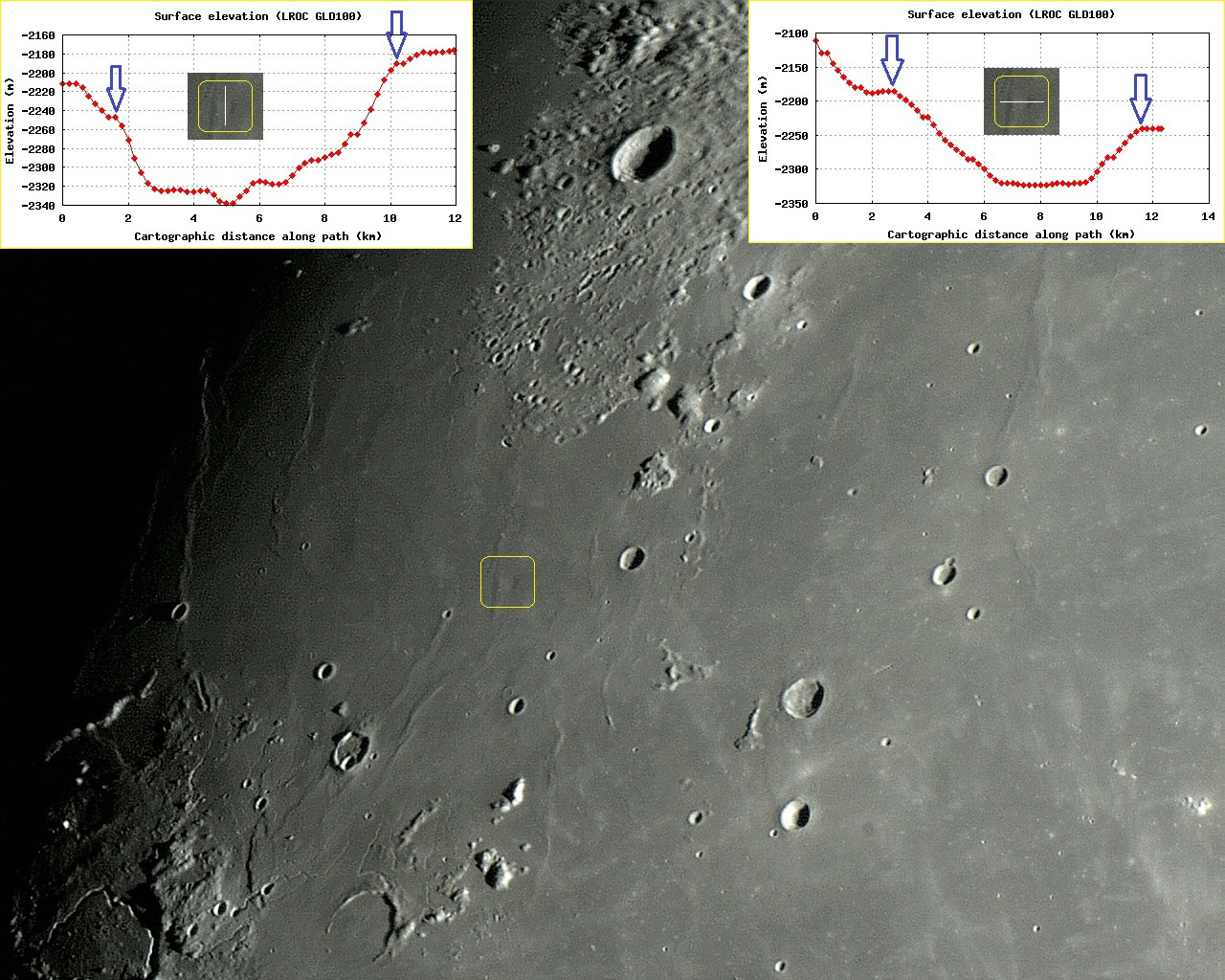Difference between revisions of "September 13, 2013"
(Created page with "__NOTOC__ =Another Small Mystery= <!-- ws:start:WikiTextHeadingRule:0:<h1> --> <!-- ws:start:WikiTextLocalImageRule:14:<img src="/file/view/LPOD-Sept13-13.jp...") |
|||
| Line 6: | Line 6: | ||
<em>image by [mailto:tolentino@fumec.br Ricardo Jose Vaz Tolentino]</em><br /> | <em>image by [mailto:tolentino@fumec.br Ricardo Jose Vaz Tolentino]</em><br /> | ||
| + | <table class="wiki_table"> | ||
| + | <tr> | ||
| + | <td><!-- ws:start:WikiTextLocalImageRule:15:<img src="/file/view/LPOD-Sept13-13b.jpg/450753978/LPOD-Sept13-13b.jpg" alt="" title="" /> -->[[File:LPOD-Sept13-13b.jpg|LPOD-Sept13-13b.jpg]]<!-- ws:end:WikiTextLocalImageRule:15 --><br /> | ||
</td> | </td> | ||
<td>Recently, Maximilian Teodorescu recognized what might be a shallow [http://lpod.wikispaces.com/September+10%2C+2013 crater] in southern Oceanus Procellarum, and now Ricardo has found another possible one in the northern part of the same ocean. Using one of his single shot images, Ricardo has outlined the area of the possible crater between the famous Gruithuisen domes and the even more famous Aristarchus Plateau. Using the LRO Quickmap elevation tool he deduced that the crater is about 8.5 km wide, 130 m deep and centered at 32.3980*N, 42.7580*W. Like Max's possible crater this one is bounded on one side by a mare ridge, which makes determination of its reality harder. Is it an impact crater that happens to be near a ridge, and partially covered by lava flows? Or is the ridge flanked by a low trough that makes a crater feature appear where none exist? LRO provides two kinds of support for the reality of this feature. First, Ricardo ran traverses both north-south and east-west, getting the same type of closed depression topography. Second, enlarging the LRO mosaic to see the NAC shots - left - reveals two very low elevation curved ridges that are in the right place to be the curved rim of a buried crater. For this type of feature we may never be certain what it is, but a buried crater seems like a likely possibility.<br /> | <td>Recently, Maximilian Teodorescu recognized what might be a shallow [http://lpod.wikispaces.com/September+10%2C+2013 crater] in southern Oceanus Procellarum, and now Ricardo has found another possible one in the northern part of the same ocean. Using one of his single shot images, Ricardo has outlined the area of the possible crater between the famous Gruithuisen domes and the even more famous Aristarchus Plateau. Using the LRO Quickmap elevation tool he deduced that the crater is about 8.5 km wide, 130 m deep and centered at 32.3980*N, 42.7580*W. Like Max's possible crater this one is bounded on one side by a mare ridge, which makes determination of its reality harder. Is it an impact crater that happens to be near a ridge, and partially covered by lava flows? Or is the ridge flanked by a low trough that makes a crater feature appear where none exist? LRO provides two kinds of support for the reality of this feature. First, Ricardo ran traverses both north-south and east-west, getting the same type of closed depression topography. Second, enlarging the LRO mosaic to see the NAC shots - left - reveals two very low elevation curved ridges that are in the right place to be the curved rim of a buried crater. For this type of feature we may never be certain what it is, but a buried crater seems like a likely possibility.<br /> | ||
Revision as of 22:33, 1 January 2015
Another Small Mystery
image by Ricardo Jose Vaz Tolentino
 |
Recently, Maximilian Teodorescu recognized what might be a shallow crater in southern Oceanus Procellarum, and now Ricardo has found another possible one in the northern part of the same ocean. Using one of his single shot images, Ricardo has outlined the area of the possible crater between the famous Gruithuisen domes and the even more famous Aristarchus Plateau. Using the LRO Quickmap elevation tool he deduced that the crater is about 8.5 km wide, 130 m deep and centered at 32.3980*N, 42.7580*W. Like Max's possible crater this one is bounded on one side by a mare ridge, which makes determination of its reality harder. Is it an impact crater that happens to be near a ridge, and partially covered by lava flows? Or is the ridge flanked by a low trough that makes a crater feature appear where none exist? LRO provides two kinds of support for the reality of this feature. First, Ricardo ran traverses both north-south and east-west, getting the same type of closed depression topography. Second, enlarging the LRO mosaic to see the NAC shots - left - reveals two very low elevation curved ridges that are in the right place to be the curved rim of a buried crater. For this type of feature we may never be certain what it is, but a buried crater seems like a likely possibility.
|
COMMENTS?
Click on this icon File:PostIcon.jpg at the upper right to post a comment.




